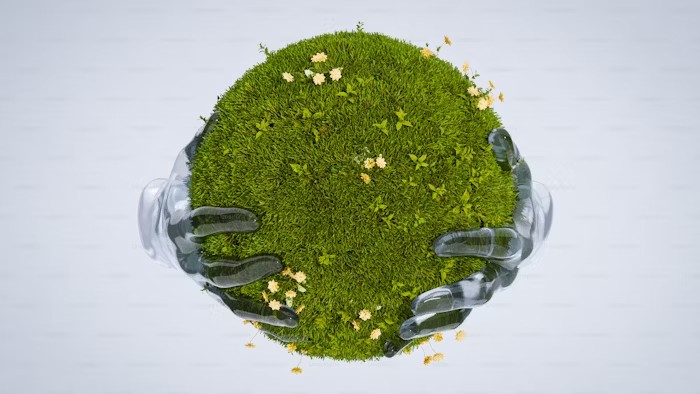In recent years, the quest for sustainable alternatives to conventional materials has become a pressing concern across various industries. One of the most promising innovations emerging in this landscape is pollaste, a revolutionary biomaterial derived from natural sources. Pollaste is not only eco-friendly but also exhibits remarkable versatility, making it an attractive option for a wide range of applications.
What is Pollaste?
Pollaste is a composite material primarily made from organic waste, including agricultural residues, food waste, and other biodegradable materials. The name “pollaste” is derived from the combination of “pollution” and “plastics,” reflecting its purpose of addressing the environmental issues caused by plastic pollution. The production of pollaste involves a process of upcycling organic waste, where it is transformed into a durable and functional material through a series of chemical and physical treatments.
The development of pollaste stems from the increasing awareness of the environmental impact of traditional plastics, which take hundreds of years to decompose and contribute significantly to global pollution. By harnessing the potential of organic waste, pollaste presents a viable alternative that not only mitigates waste but also reduces the reliance on fossil fuels.
Environmental Benefits
One of the most significant advantages of pollaste is its environmental footprint. Unlike conventional plastics, which are derived from petroleum, pollaste utilizes renewable resources that would otherwise contribute to landfill waste. This circular approach to material production not only reduces greenhouse gas emissions associated with fossil fuel extraction but also helps in managing organic waste efficiently.
Pollaste is biodegradable, meaning it can decompose naturally over time, returning to the earth without leaving harmful residues. This characteristic is especially vital in combating plastic pollution, which has become a major threat to ecosystems and wildlife. By using pollaste, businesses and consumers can significantly reduce their environmental impact and contribute to a more sustainable future.
Versatility of Pollaste
Pollaste’s unique properties allow it to be molded into various forms, making it suitable for a wide range of applications. It can be used in packaging, construction, textiles, and even consumer goods. The versatility of pollaste opens doors to numerous industries, providing sustainable options where traditional plastics have long dominated.
In the packaging industry, pollaste offers a biodegradable alternative to single-use plastics, which are notorious for their environmental impact. Brands that switch to pollaste packaging can enhance their sustainability credentials and attract environmentally conscious consumers.
In construction, pollaste can be used in insulation materials, bricks, and panels. Its thermal properties and lightweight nature make it an excellent candidate for eco-friendly building solutions. As the construction industry faces increasing pressure to reduce its carbon footprint, pollaste presents a compelling option.
Moreover, pollaste can be blended with other materials to enhance its performance characteristics, such as strength and durability. This adaptability allows manufacturers to tailor pollaste to meet specific needs across various applications, further solidifying its potential in the market.
Economic Potential
The economic implications of adopting pollaste are substantial. By creating a market for organic waste, pollaste production can stimulate local economies and promote job creation in waste management and material processing. Farmers, waste management companies, and manufacturers can collaborate to establish a circular economy that benefits all parties involved.
Furthermore, as consumers become more aware of sustainability issues, there is a growing demand for eco-friendly products. Companies that invest in pollaste technology may find themselves at a competitive advantage, capturing a segment of the market that prioritizes environmental responsibility.
Challenges and Future Prospects

Despite its numerous advantages, pollaste is not without challenges. The production process must be optimized for scalability, ensuring that it can meet the growing demand without compromising quality. Additionally, widespread adoption requires education and awareness among consumers and businesses about the benefits of pollaste over traditional materials.
Regulatory frameworks also play a crucial role in the success of pollaste. Governments must create incentives for businesses to adopt sustainable practices and invest in research and development for emerging materials like pollaste. Collaboration between stakeholders in the waste management, manufacturing, and retail sectors will be essential to drive innovation and ensure the successful integration of pollaste into the market.
Looking ahead, the future of pollaste appears promising. As technology advances and more research is conducted, it is likely that new applications and enhancements for pollaste will emerge. With ongoing commitment from businesses, governments, and consumers, pollaste has the potential to revolutionize the way we think about materials and their impact on the planet.
Conclusion
Pollaste represents a significant leap toward a more sustainable future. By harnessing organic waste and transforming it into a versatile material, we can address the pressing issues of plastic pollution and resource depletion. As we navigate the challenges of climate change, innovations like pollaste offer hope and solutions for a greener tomorrow. Embracing this new material is not just a choice for businesses; it is a step toward a sustainable and responsible global community.





